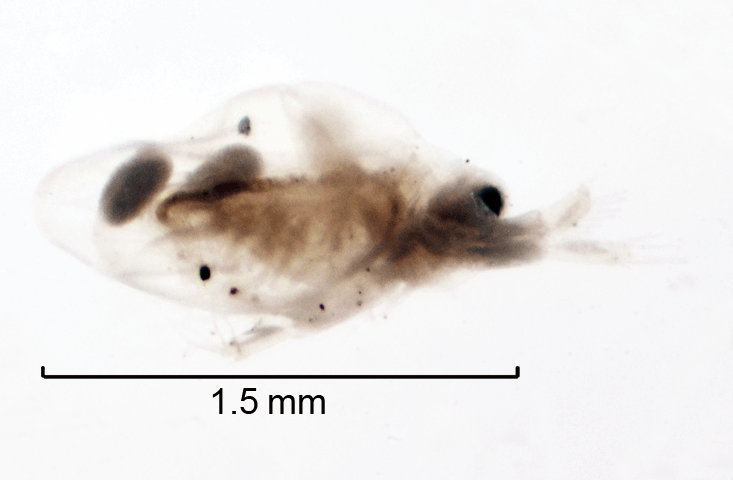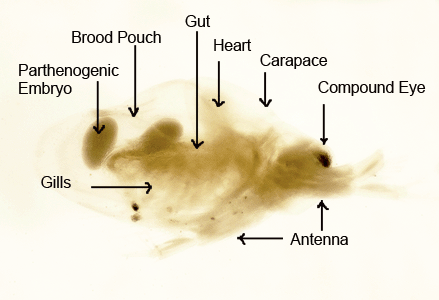Class Branchiopoda in the Christopher B. Smith Preserve
Class Branchiopoda Characteristics: Members of this class include fairy shrimp, clam shrimp, water fleas, and tadpole shrimp. Most are small, feed on plankton and detritus, and live in freshwater. Branchiopods have gills on many of their appendages, including some mouthparts. The class name is derived from the Greek words "brachia" meaning gills and "pous," meaning "foot."
Branchiopods have compound eyes and a carapace (hard shell). In the case of water fleas, the only branchiopod photographed in the Preserve, the carapace is a two-valved shell that encloses the trunk. Since the carapace prevents the use of the trunk limbs for swimming, these animals use their antennae for locomotion. They beat their trunk limbs in a wave-like motion, creating water flow along the midline. This current transports oxygen to its gills and food to its mouth.
Interactions in the Smith Preserve: Branchiopods are an important food source for invertebrates and small vertebrates (amphibians and fish).


 A female is larger than a male and has a brood chamber where eggs are created and carried. The individual shown in these photographs is a female with two developing embryos.
A female is larger than a male and has a brood chamber where eggs are created and carried. The individual shown in these photographs is a female with two developing embryos.